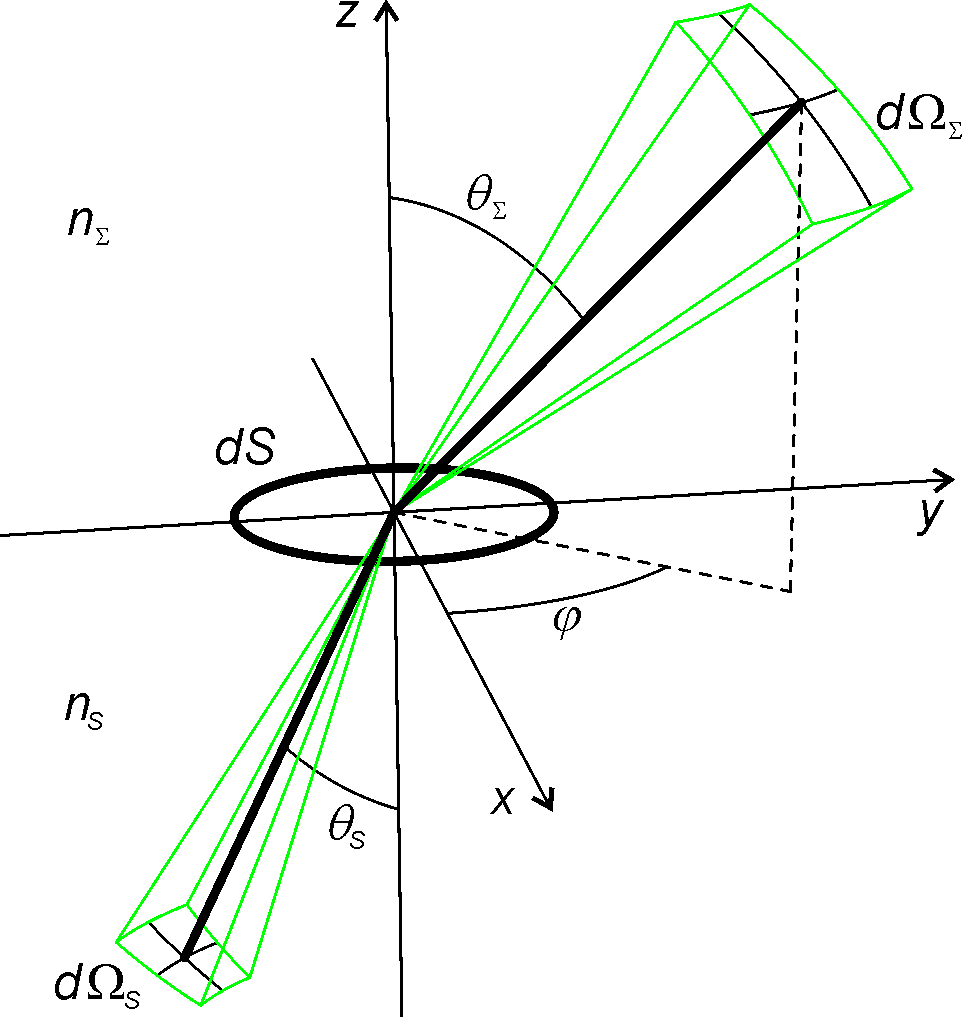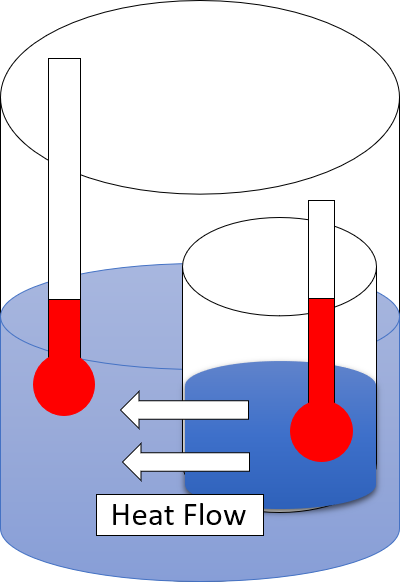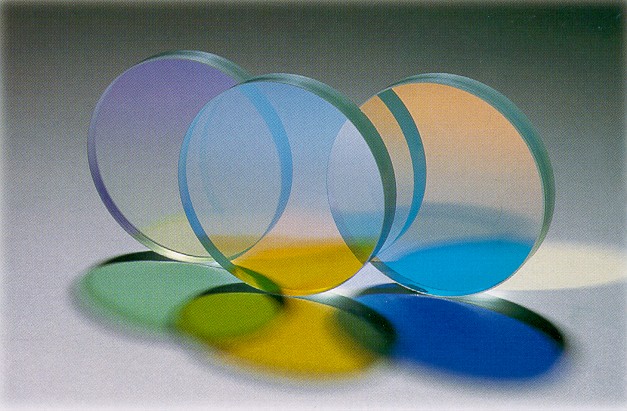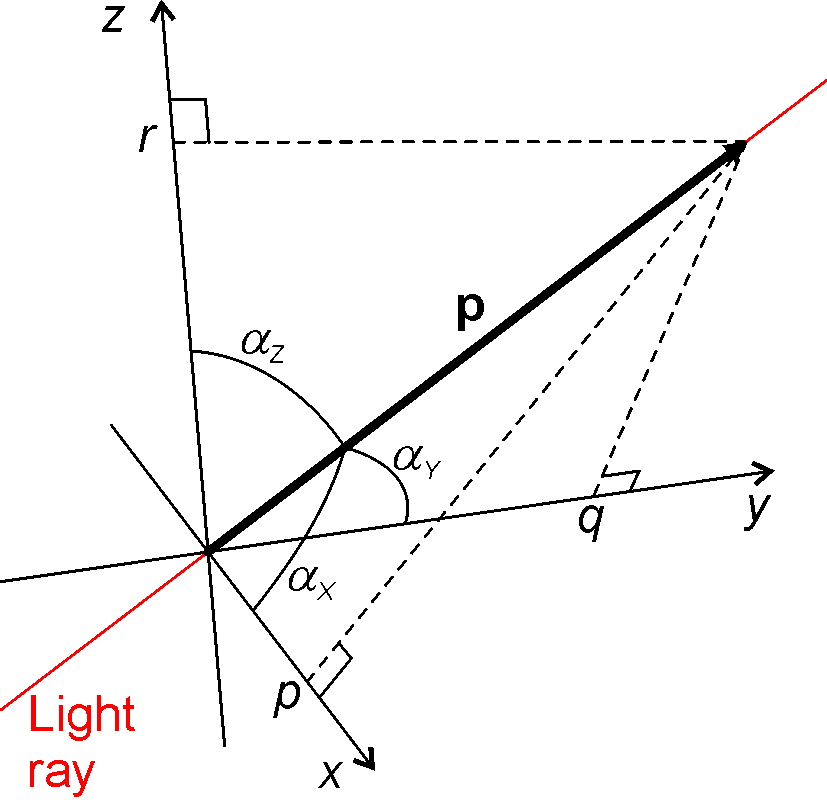|
Étendue
Etendue or Ă©tendue (; ) is a property of light in an optical system, which characterizes how "spread out" the light is in area and angle. It corresponds to the beam parameter product (BPP) in Gaussian beam optics. Other names for etendue include acceptance, throughput, light grasp, light-gathering power, optical extent, and the AΩ product. ''Throughput'' and ''AΩ product'' are especially used in radiometry and radiative transfer where it is related to the view factor (or shape factor). It is a central concept in nonimaging optics. From the source point of view, etendue is the product of the area of the source and the solid angle that the system's entrance pupil subtends as seen from the source. Equivalently, from the system point of view, the etendue equals the area of the entrance pupil times the solid angle the source subtends as seen from the pupil. These definitions must be applied for infinitesimally small "elements" of area and solid angle, which must the ... [...More Info...] [...Related Items...] OR: [Wikipedia] [Google] [Baidu] |
Radiance
In radiometry, radiance is the radiant flux emitted, reflected, transmitted or received by a given surface, per unit solid angle per unit projected area. Radiance is used to characterize diffuse emission and reflection of electromagnetic radiation, and to quantify emission of neutrinos and other particles. The SI unit of radiance is the watt per steradian per square metre (). It is a ''directional'' quantity: the radiance of a surface depends on the direction from which it is being observed. The related quantity spectral radiance is the radiance of a surface per unit frequency or wavelength, depending on whether the spectrum is taken as a function of frequency or of wavelength. Historically, radiance was called "intensity" and spectral radiance was called "specific intensity". Many fields still use this nomenclature. It is especially dominant in heat transfer, astrophysics and astronomy. "Intensity" has many other meanings in physics, with the most common being power per unit ... [...More Info...] [...Related Items...] OR: [Wikipedia] [Google] [Baidu] |
Radiant Flux
In radiometry, radiant flux or radiant power is the radiant energy emitted, reflected, transmitted, or received per unit time, and spectral flux or spectral power is the radiant flux per unit frequency or wavelength, depending on whether the spectrum is taken as a function of frequency or of wavelength. The SI unit of radiant flux is the watt (W), one joule per second (), while that of spectral flux in frequency is the watt per hertz () and that of spectral flux in wavelength is the watt per metre ()—commonly the watt per nanometre (). Mathematical definitions Radiant flux Radiant flux, denoted ('e' for "energetic", to avoid confusion with photometric quantities), is defined as \begin \Phi_\mathrm &= \frac \\ ptQ_\mathrm &= \int_ \int_ \mathbf\cdot \hat\mathbf\, dA dt \end where * is the time; * is the radiant energy passing out of a closed surface ; * is the Poynting vector, representing the current density of radiant energy; * is the normal vector of a point on ; * ... [...More Info...] [...Related Items...] OR: [Wikipedia] [Google] [Baidu] |
Etendue In Refraction
Etendue or Ă©tendue (; ) is a property of light in an optical system, which characterizes how "spread out" the light is in area and angle. It corresponds to the beam parameter product (BPP) in Gaussian beam optics. Other names for etendue include acceptance, throughput, light grasp, light-gathering power, optical extent, and the AΩ product. ''Throughput'' and ''AΩ product'' are especially used in radiometry and radiative transfer where it is related to the view factor (or shape factor). It is a central concept in nonimaging optics. From the source point of view, etendue is the product of the area of the source and the solid angle that the system's entrance pupil subtends as seen from the source. Equivalently, from the system point of view, the etendue equals the area of the entrance pupil times the solid angle the source subtends as seen from the pupil. These definitions must be applied for infinitesimally small "elements" of area and solid angle, which must then be su ... [...More Info...] [...Related Items...] OR: [Wikipedia] [Google] [Baidu] |
View Factor
Acornsoft was the software arm of Acorn Computers, and a major publisher of software for the BBC Micro and Acorn Electron. As well as games, it also produced a large number of educational titles, extra computer languages and business and utility packages – these included word processor ''VIEW'' and the spreadsheet '' ViewSheet'' supplied on ROM and cartridge for the BBC Micro/ Acorn Electron and included as standard in the BBC Master and Acorn Business Computer. History Acornsoft was formed in late 1980 by Acorn Computers directors Hermann Hauser and Chris Curry, and David Johnson-Davies, author of the first game for a UK personal computer and of the official Acorn Atom manual "Atomic Theory and Practice". David Johnson-Davies was managing director and in early 1981 was joined by Tim Dobson, Programmer and Chris Jordan, Publications Editor. While some of their games were clones or remakes of popular arcade games (e.g. ''Hopper'' is a clone of Sega's '' Frogger'', '' S ... [...More Info...] [...Related Items...] OR: [Wikipedia] [Google] [Baidu] |
Second Law Of Thermodynamics
The second law of thermodynamics is a physical law based on Universal (metaphysics), universal empirical observation concerning heat and Energy transformation, energy interconversions. A simple statement of the law is that heat always flows spontaneously from hotter to colder regions of matter (or 'downhill' in terms of the temperature gradient). Another statement is: "Not all heat can be converted into Work (thermodynamics), work in a cyclic process."Young, H. D; Freedman, R. A. (2004). ''University Physics'', 11th edition. Pearson. p. 764. The second law of thermodynamics establishes the concept of entropy as a physical property of a thermodynamic system. It predicts whether processes are forbidden despite obeying the requirement of conservation of energy as expressed in the first law of thermodynamics and provides necessary criteria for spontaneous processes. For example, the first law allows the process of a cup falling off a table and breaking on the floor, as well as allowi ... [...More Info...] [...Related Items...] OR: [Wikipedia] [Google] [Baidu] |
Entropy
Entropy is a scientific concept, most commonly associated with states of disorder, randomness, or uncertainty. The term and the concept are used in diverse fields, from classical thermodynamics, where it was first recognized, to the microscopic description of nature in statistical physics, and to the principles of information theory. It has found far-ranging applications in chemistry and physics, in biological systems and their relation to life, in cosmology, economics, sociology, weather science, climate change and information systems including the transmission of information in telecommunication. Entropy is central to the second law of thermodynamics, which states that the entropy of an isolated system left to spontaneous evolution cannot decrease with time. As a result, isolated systems evolve toward thermodynamic equilibrium, where the entropy is highest. A consequence of the second law of thermodynamics is that certain processes are irreversible. The thermodynami ... [...More Info...] [...Related Items...] OR: [Wikipedia] [Google] [Baidu] |
Diffuser (optics)
In optics, a diffuser (also called a light diffuser or optical diffuser) is any material that diffuses or scatters light in some manner to transmit soft light. Diffused light can be easily obtained by reflecting light from a white surface, while more compact diffusers may use translucent material, including ground glass, teflon, opal glass, and greyed glass. Types Perfect reflecting diffuser A perfect (reflecting) diffuser (PRD) is a theoretical perfectly white surface with Lambertian reflectance (its brightness appears the same from any angle of view). It does not absorb light, giving back 100% of the light it receives. Reflective diffusers can be easily characterised by scatterometers.{{cite web, url=http://www.zebraoptical.com/roughnessviascatterometry.html, title=Page Title, website=www.zebraoptical.com Diffractive diffuser/homogenizer A diffractive diffuser is a kind of diffractive optical element (DOE) that exploits the principles of diffraction and refraction. It ... [...More Info...] [...Related Items...] OR: [Wikipedia] [Google] [Baidu] |
Wikibooks
Wikibooks (previously called ''Wikimedia Free Textbook Project'' and ''Wikimedia-Textbooks'') is a wiki-based Wikimedia project hosted by the Wikimedia Foundation for the creation of free content digital textbooks and annotated texts that anyone can edit. Initially, the project was created solely in English in July 2003; a later expansion to include additional languages was started in July 2004. As of , there are Wikibooks sites active for languages Wikimedia's MediaWiki API:Sitematrix. Retrieved from Data:Wikipedia statistics/meta.tab comprising a total of articles and recently active editors. Wikimedia's MediaWiki API:Siteinfo. Retrieved from Data:Wikipedia statistics/data.tab History The wikibooks.org domain was registered on July 19, 2003. It was launched to host and build free textbooks on subjects such as organic chemistry and physics, in response to a request by Wikipedia contributor Karl Wick. Two major sub-projects, Wikijunior and Wikiversity, were creat ... [...More Info...] [...Related Items...] OR: [Wikipedia] [Google] [Baidu] |
Transparency (optics)
In the field of optics, transparency (also called pellucidity or diaphaneity) is the physical property of allowing light to pass through the material without appreciable light scattering by particles, scattering of light. On a macroscopic scale (one in which the dimensions are much larger than the wavelengths of the photons in question), the photons can be said to follow Snell's law. Translucency (also called translucence or translucidity) is the physical property of allowing light to pass through the material (with or without scattering of light). It allows light to pass through but the light does not necessarily follow Snell's law on the macroscopic scale; the photons may be scattered at either of the two interfaces, or internally, where there is a change in the index of refraction. In other words, a translucent material is made up of components with different indices of refraction. A transparent material is made up of components with a uniform index of refraction. Transparent m ... [...More Info...] [...Related Items...] OR: [Wikipedia] [Google] [Baidu] |
Medium (optics)
In optics, an optical medium is material through which light and other electromagnetic waves propagate. It is a form of transmission medium. The permittivity and permeability of the medium define how electromagnetic waves propagate in it. Properties The optical medium has an '' intrinsic impedance'', given by ::\eta = where E_x and H_y are the electric field and magnetic field, respectively. In a region with no electrical conductivity, the expression simplifies to: ::\eta = \sqrt\ . For example, in free space the intrinsic impedance is called the characteristic impedance of vacuum, denoted ''Z''0, and ::Z_0 = \sqrt\ . Waves propagate through a medium with velocity c_w = \nu \lambda , where \nu is the frequency and \lambda is the wavelength of the electromagnetic waves. This equation also may be put in the form : c_w = \ , where \omega is the angular frequency of the wave and k is the wavenumber of the wave. In electrical engineering, the symbol \beta, called the '' ... [...More Info...] [...Related Items...] OR: [Wikipedia] [Google] [Baidu] |
Etendue
Etendue or Ă©tendue (; ) is a property of light in an optical system, which characterizes how "spread out" the light is in area and angle. It corresponds to the beam parameter product (BPP) in Gaussian beam optics. Other names for etendue include acceptance, throughput, light grasp, light-gathering power, optical extent, and the AΩ product. ''Throughput'' and ''AΩ product'' are especially used in radiometry and radiative transfer where it is related to the view factor (or shape factor). It is a central concept in nonimaging optics. From the source point of view, etendue is the product of the area of the source and the solid angle that the system's entrance pupil subtends as seen from the source. Equivalently, from the system point of view, the etendue equals the area of the entrance pupil times the solid angle the source subtends as seen from the pupil. These definitions must be applied for infinitesimally small "elements" of area and solid angle, which must then b ... [...More Info...] [...Related Items...] OR: [Wikipedia] [Google] [Baidu] |
International Bureau Of Weights And Measures
The International Bureau of Weights and Measures (, BIPM) is an List of intergovernmental organizations, intergovernmental organisation, through which its 64 member-states act on measurement standards in areas including chemistry, ionising radiation, physical metrology, as well as the International System of Units (SI) and Coordinated Universal Time (UTC). It is headquartered in the Pavillon de Breteuil in Saint-Cloud, near Paris, France. The organisation has been referred to as IBWM (from its name in English) in older literature. Function The BIPM has the mandate to provide the basis for a single, coherent system of measurements throughout the world, traceable to the International System of Units, International System of Units (SI). This task takes many forms, from direct dissemination of units to coordination through international comparisons of national measurement standards (as in electricity and ionising radiation). Following consultation, a draft version of the BIPM Work ... [...More Info...] [...Related Items...] OR: [Wikipedia] [Google] [Baidu] |







